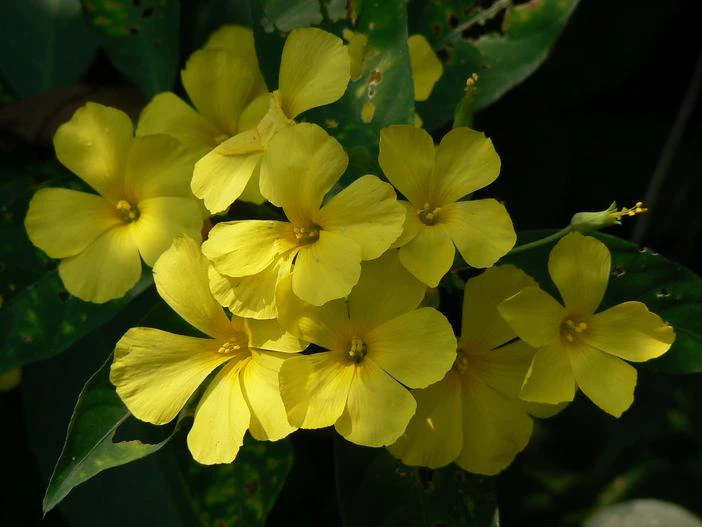Yellow Flax
(Reinwardtia indica)
Yellow Flax (Reinwardtia indica)
/
/

Dinesh Valke
CC BY-SA 2.0
Image By:
Dinesh Valke
Recorded By:
Copyright:
CC BY-SA 2.0
Copyright Notice:
Photo by: Dinesh Valke | License Type: CC BY-SA 2.0 | License URL: https://creativecommons.org/licenses/by-sa/2.0/ | Uploader: Dinesh Valke | Publisher: Flickr
























Estimated Native Range
Climate Requirements for Nicholasville, Kentucky
| This Plant | Your Site | Plant Suitability for Your Location | ||
|---|---|---|---|---|
| • Precipitation | 17" - 181" | 46" | Aquatic | Aquatic |
| • High Temp. | 72°F - 102°F | 86°F | Your summer temperatures are normal for this plant. | Excellent |
| • Low Temp. | 15°F - 70°F | 23°F | Your winter temperatures are normal for this plant | Excellent |
This plant should grow very well at your location without additional irrigation.
Summary
Reinwardtia indica, commonly known as Yellow Flax, is an evergreen shrub native to open woodlands and sunny grasslands in South and Southeast Asia. It typically grows to a height and width of 2-3 feet (0.6-0.9 meters), forming a compact, rounded shape. The plant features narrow, lance-shaped leaves and bears bright yellow, trumpet-shaped flowers that bloom profusely in the spring and winter, adding a splash of color to the garden during these seasons.
Yellow Flax is valued for its vibrant flowers and its ability to thrive in a variety of garden settings. It is often used in border plantings, as a ground cover, or in container gardens. The plant prefers well-drained soils and can tolerate a range of soil types, from clay to sandy loams. While it does best in full sun or part shade, it is relatively drought-tolerant once established. Yellow Flax is also known for its use in traditional medicine and for the yellow dye extracted from its flowers, which is used in textiles and paints. Gardeners should be aware that it may require protection from frost in cooler climates and can be susceptible to root rot if overwatered.CC BY-SA 4.0
Yellow Flax is valued for its vibrant flowers and its ability to thrive in a variety of garden settings. It is often used in border plantings, as a ground cover, or in container gardens. The plant prefers well-drained soils and can tolerate a range of soil types, from clay to sandy loams. While it does best in full sun or part shade, it is relatively drought-tolerant once established. Yellow Flax is also known for its use in traditional medicine and for the yellow dye extracted from its flowers, which is used in textiles and paints. Gardeners should be aware that it may require protection from frost in cooler climates and can be susceptible to root rot if overwatered.CC BY-SA 4.0
Plant Description
- Plant Type: Shrub
- Height: 2-3 feet
- Width: 2-3 feet
- Growth Rate: Moderate
- Flower Color: Yellow
- Flowering Season: Spring, Winter
- Leaf Retention: Evergreen
Growth Requirements
- Sun: Full Sun, Part Shade
- Water: Medium
- Drainage: Medium
Common Uses
Border Plant, Low Maintenance, Potted Plant, Rock Garden, Showy Flowers
Natural Habitat
Native to open woodlands and sunny grasslands in South and Southeast Asia
Other Names
Common Names: Pyoli, Busklin
Scientific Names: Linum trigynum, Reinwardtia indica, Reinwardtia trigyna, Kittelocharis trigyna, Linum boerhaviifolium, Linum repens, Linum semitrigynum, Macrolinum trigynum, Numisaureum repens
GBIF Accepted Name: Reinwardtia indica Dumort.